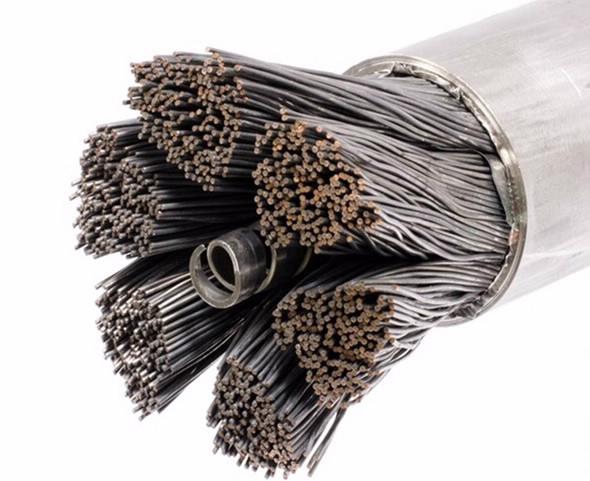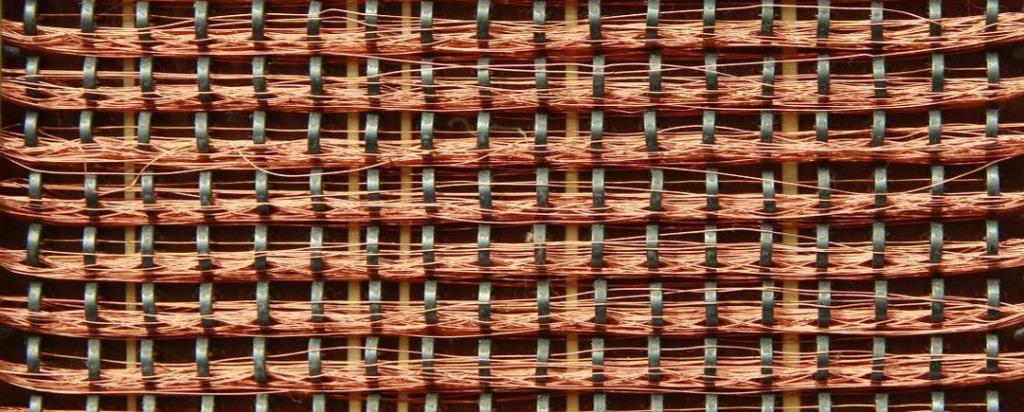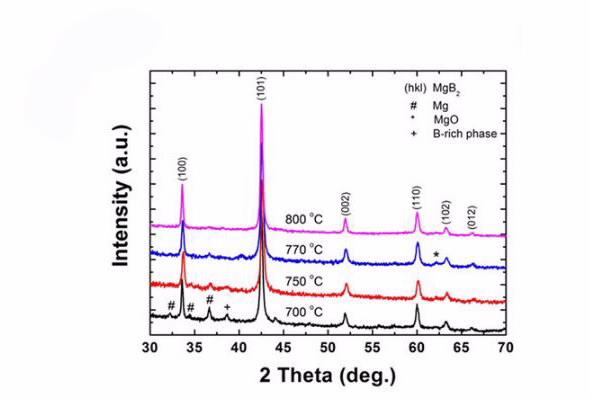

Published on the 21st February 2017 by ANSTO Staff
ANSTO has participated in collaborative research investigating the microstructure and superconducting properties of a material made with isotopically pure boron, 11B, for use in the magnetic coils of nuclear fusion reactors, such as the International Thermonuclear Experimental Reactor (ITER).
 |
| Jacketed cable for ITER's toroidal field conducting, superconducting and non-conducting strands around a central channel for helium Image: ITER |
An international group of researchers led by Md Shahriar Hossain, Senior Research Fellow from the University of Wollongong, who carried out the investigations at ANSTO, published in Scientific Reports, found that the superconducting compound Mg11B2 filament made with very low cost starting materials showed an optimal electrical transport current performance.
For practical applications, maximum electrical transport current density, in which superconductivity is maintained without resistance, is considered the most important characteristic of any superconductor.
The authors describe the result as a significant breakthrough, which strongly supports the feasibility of replacing NbTi wires in highly radioactive fusion reactors with high performance and low radioactivity Mg11B2 wires.
 |
| X-ray diffraction patterns of all Mg11B2 wires sintered at different temperatures |
Co-author, Instrument Scientist Dr Vladimir Luzin of ANSTO’s Australian Centre for Neutron Scattering (ACNS), who has carried out previous collaborative research on superconducting cables for ITER, supervised X-ray diffraction experiments and assisted with data analysis.
PhD student Hyunseock Jie, holds a joint position at the ACNS and the University of Wollongong and the Head of Superconducting Systems at ITER, Arnaud Devred are also both co-author on the publication.
Superconductors used in magnet technology carry extreme currents because of their ability to keep magnetic flux motionless.
With the aim of further improving the critical electrical transport current density, the researchers probed the effects of sintering temperatures used in the production of microfilament wires made from isotopically pure boron in the compound Mg11B2and transport current capacity at high magnetic field in the study.
According to the authors, sintering at 750° C resulted in the highest magnetic properties and best electrical transport density in the Mg11B2, producing better phase composition and crystallinity than other temperatures (700°, 770° and 800° C) that were investigated.
Although X-ray diffraction confirmed that the phase composition and superconductivity of the Mg11B2 was retained at all temperatures, a vanishing of transport current occurred at 800° C.
Scanning electron microscopy revealed that this was attributable to severe deterioration of inter grain connectivity, the ability of current to flow one grain to an adjacent grain, caused by the formation of big microcracks, voids, and Mg11B2 clusters at 800° C.
The superconducting fragments become isolated from each other and eventually, very little current passes through the wire.
The transport critical current measurements determined in magnetic fields up to 15 T were undertaken at the Institute for Superconducting and Electronic Materials at the University of Wollongong, which has world-class facilities for the fabrication and advanced characterization of superconducting wires, coils and devices.
The superconducting magnets for the ITER experimental reactor are being fabricated using NbTi and Nb3Sn but there is a major drawback.
These low temperature superconductor cannot operate without the liquid helium which is scarce and becoming very expensive. “Because of its transition temperature at 39 K, Mg11B2 can operate without the need for costly liquid helium,” said Dr Hossain
Irradiating Nb based superconductors results in the production of the long lived nuclide, 94Nb, which requires tens of thousands of year to cool down.
In contrast, Mg11B2, which was known to have superconducting properties, is much more stable in an irradiation environment with a significantly shorter decay time of about a year.
There are additional advantages. The fabrication costs of Mg11B2,wire are a third less than that of Nb3Sn.
Also, because the Mg11B2 has working temperature of 20°K and can be cryo-cooled, it could cut operating costs by 50%; while Nb materials need liquid helium to cool them to 4° K for superconductivity.
The origin of the superconducting properties of magnesium diboride, MgB2, which has a transition temperature of 39 K, was first reported by researchers from Japan in Nature in 2001 who attributed it to a two band electron structure.
Conventional materials superconduct when electrons are induced by an energy gap to form “Cooper pairs” at a critical temperature.
In MgB2the pairing arises from attractive interactions between the electrons that are mediated by atomic vibrations, or phonons.
The electron pairs possess different binding energies, corresponding to two different energy gaps.
ANSTO signed a cooperation agreement with ITER in September 2016 to collaborate on research in diagnostics, materials, superconducting technology, and fusion plasma theory and modelling for the reactor.
The superconducting materials group at University of Wollongong led by Dr Hossain is also part of this consortium.